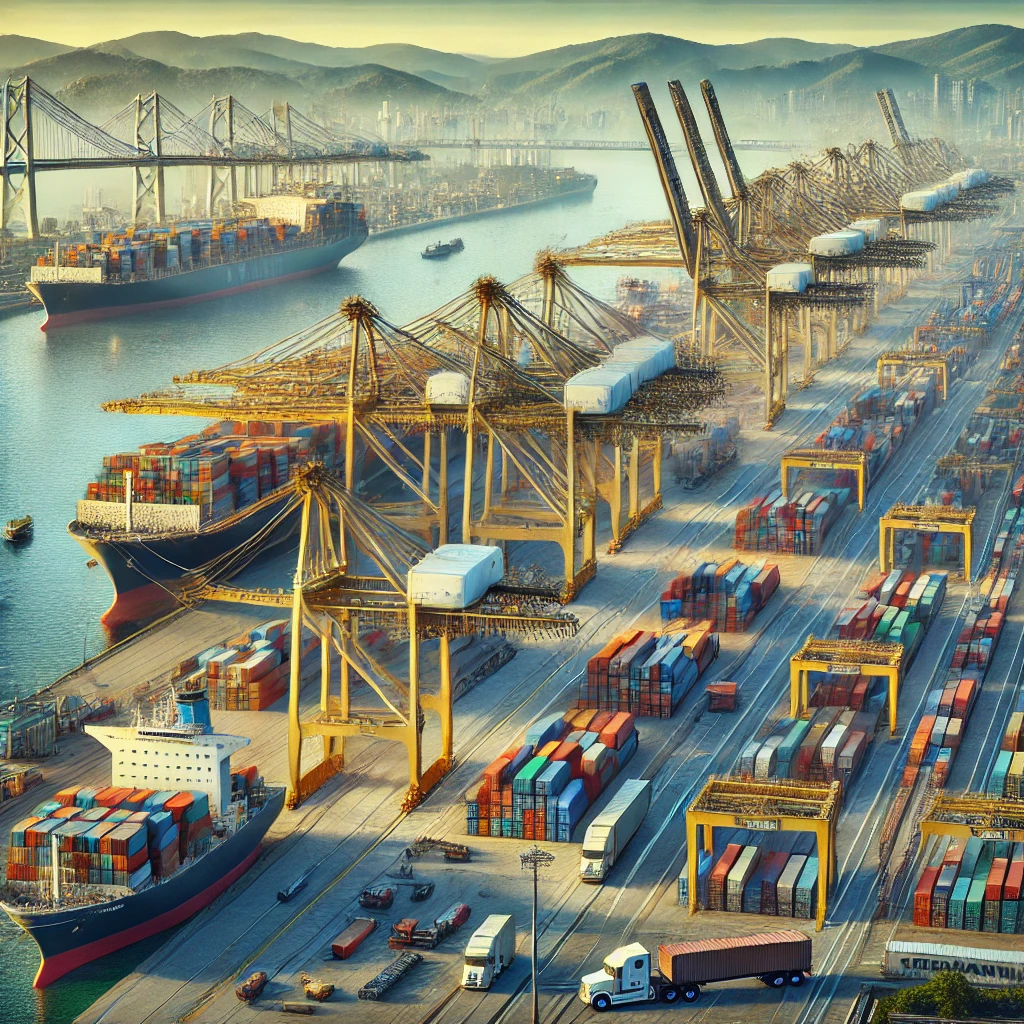An In-Depth Guide to Oakland Port USA
The Port of Oakland is one of the busiest and most significant shipping hubs on the U.S. West Coast. Located in Oakland, California, it serves as a vital gateway for international trade, connecting businesses across the globe. Established in 1927, the port has grown into a premier shipping and logistics hub, handling millions of TEUs (twenty-foot equivalent units) annually.

Key Features of the Oakland Port USA
- Strategic Location
- Positioned near San Francisco Bay, providing direct access to the Pacific Ocean.
- Serves as a major gateway for Asia-Pacific trade.
- Offers proximity to key transportation networks, including highways, railroads, and airports.
- Shipping and Cargo Handling
- Handles containerized cargo, bulk shipments, and breakbulk cargo.
- Features advanced terminal facilities with automated cranes and real-time tracking systems.
- Offers dedicated services for perishable goods, automobiles, and industrial equipment.
- Rail and Intermodal Connectivity
- Direct access to major rail networks, including Union Pacific and BNSF Railway.
- Efficient intermodal terminals allow for seamless cargo movement between ships, trains, and trucks.
- Sustainability Initiatives
- The Port of Oakland is a leader in green shipping efforts.
- Implements shore power programs to reduce emissions from docked ships.
- Uses low-emission cargo handling equipment and promotes clean energy initiatives.
Economic Importance of the Oakland Port USA
- Major Trade Hub
- Facilitates trade with China, Japan, South Korea, and other global markets.
- Handles over $40 billion in annual trade.
- Job Creation
- Provides employment opportunities for over 80,000 workers.
- Supports industries including logistics, manufacturing, and agriculture.
- Business Growth Opportunities
- Essential for companies involved in import/export, freight forwarding, and supply chain management.
- Attracts investment in warehouse storage, distribution centers, and transportation services.

Major Terminals at the Port of Oakland
Terminal Name | Operator | Primary Cargo Type |
Oakland International Container Terminal (OICT) | SSA Marine | Containerized Cargo |
TraPac Oakland | TraPac | Containerized Cargo |
Everport Terminal | Everport Terminal Services | Containerized Cargo |
Matson Terminal | Matson, Inc. | Shipping & Logistics |
How the Port of Oakland Benefits Businesses
- Faster Shipping Times
- Reduces transit time for goods heading to Pacific Rim countries.
- Provides streamlined customs clearance processes.
- Cost-Effective Transportation
- Competitive pricing for container handling and shipping services.
- Efficient cargo operations reduce storage and demurrage costs.
- Advanced Logistics Support
- Integrated tracking systems for real-time cargo monitoring.
- Collaboration with freight forwarders and third-party logistics providers (3PLs).

Challenges and Considerations
- Port Congestion
- High cargo volume can cause delays, particularly during peak seasons.
- Solution: Use real-time tracking and schedule shipments during off-peak hours.
- Environmental Regulations
- Strict sustainability rules may require additional compliance efforts.
- Solution: Partner with green-certified logistics providers.
- Labor Strikes and Operational Delays
- Occasional labor disputes can impact cargo movement.
- Solution: Diversify shipping routes and plan alternative logistics strategies.
Best Practices for Importers and Exporters Using the Port of Oakland
- Plan Shipments in Advance
- Reserve cargo space early to avoid delays.
- Use digital scheduling tools for efficiency.
- Work with Experienced Freight Forwarders
- Choose professionals who understand Oakland port regulations and logistics.
- Leverage Intermodal Transport
- Combine ocean, rail, and truck transport to optimize cost and delivery times.
- Stay Updated on Port Regulations
- Monitor changes in customs procedures, sustainability initiatives, and labor agreements.

Conclusion
The Port of Oakland is a key player in global trade, providing businesses with efficient shipping solutions, advanced logistics support, and economic growth opportunities. By leveraging its strategic location, cutting-edge infrastructure, and sustainable practices, companies can enhance their supply chain operations and achieve competitive advantages in international markets.
